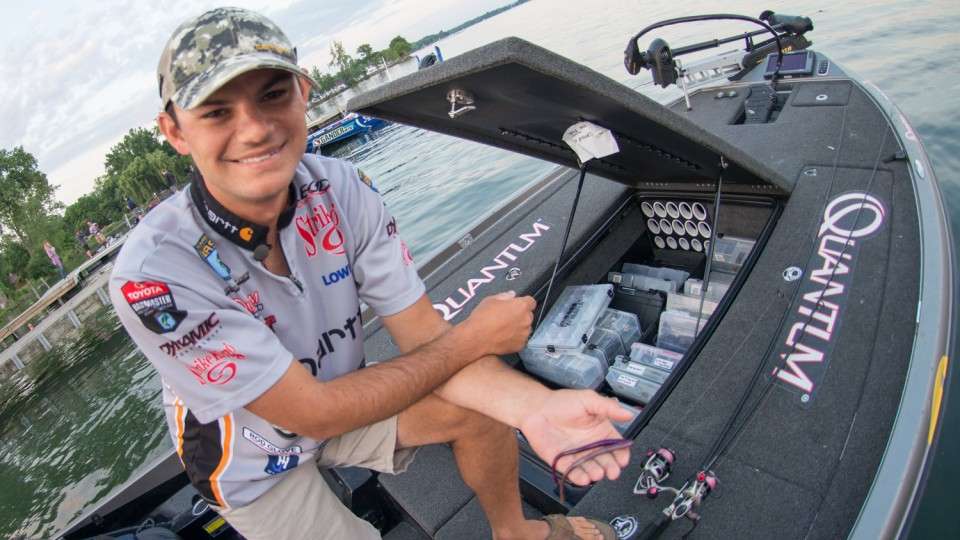
No, I’m not talking about your relationship with your wife or girlfriend. I’m talking about detecting the lightest, most hesitant bite you can imagine. In many cases that’ll make the difference between catching them and thinking they aren’t biting.
Basically, there are two parts to sensitivity. The first is practical experience. The second is equipment related.
When it comes to practical experience there’s no substitute for time spent fishing. Each lure bite is different. A bass picks up a jig differently than it inhales a crankbait or smashes a spinnerbait. And, within each lure group there are different types of bites depending upon conditions.
Colder water typically causes fish to be less aggressive and with that comes a lighter bite. It’s just the opposite when the water warms. Beyond that the bite can change within the same day for reasons we don’t understand.
The mechanical side of sensitivity is different. There are things you can do off the water that’ll make a big difference in what you feel and how you feel it. Let’s start with line choice.
I use fluorocarbon about 90 percent of the time because of its increased sensitivity. When I’m not using it I’m probably using braid for punching through heavy grass or when I’m frog fishing. I use it because I need something tough. I will fish with monofilament upon occasion, mostly with topwater baits. The fact that it floats is huge with those lures.
If you’re still using monofilament for much of your fishing, I’m going to suggest you do something the next time you’re on the water. Throw a crankbait a couple of times with fluorocarbon and then throw the same bait with monofilament. You’ll feel every vibration with the fluorocarbon. The monofilament will be mushy.
The second part to the equipment side of this discussion is your rod. It’s a little more complicated, but if you keep a few things in mind you’ll be ahead of the game. We’ll begin with action.
If possible, you should have the right rod for each bait you use. Good crankbait rods have a parabolic bend when you put pressure on them but some backbone to let you handle a big one. The parabolic bend helps with casting and hooksets. The backbone helps you control the fish once it’s hooked. On the other hand, a jig rod needs some tip but some good backbone to drive the hook home, and grass rods needs to be stiff and tough. Nothing less will set the hook and get the fish out.
Using the wrong rod is more than an inconvenience. I see a lot of guys fishing grass with rods that don’t have the backbone they need to set the hook and pull a decent size bass out of the slop. They lose a lot of bass because of that. I’m not criticizing, just stating a fact. I’ve used the wrong rod, too. And, I’ve paid for it just like they did.
A lot of Elite Series anglers I come in contact with typically use a rod that’s slightly heavier than they might need. That’s because you can get a better hookset with a heavier action rod and you can get them to the boat more efficiently. You may want to consider that when you make your next purchase.
Fighting a big bass in circles around the boat might be fun, but it’s not the way to get her into the livewell. I like to get them in as quickly as possible, so having the right rod is a must.
Beyond what I’ve said already I’d suggest that before you buy a rod you play with it for a few minutes. Make sure it has the action and feel that you need for what you’re going to be doing the next time you go fishing. Don’t buy one just because some pro tells you that’s what he uses or because it’s super light.
And keep something else in mind: There’s no standard in rod making. A medium-heavy action from one maker isn’t the same as a medium-heavy action from another, and a fast tip isn’t always a fast tip.
Consider length, too. Almost all the rods I use are between 7 feet and 7 feet, 6 inches. But that’s me. You might like something shorter, or longer.
Cost matters, too. I’d say the more you pay for a rod the lighter it’ll be and the more durable will be the blank. That’s nice. For most anglers, though, medium priced rods are the best value. I call medium something between $100 and $200.
I fish with Quantum rods. Before you buy anything else I suggest you at least check them out. They have something for everyone — length, action, price. I can assure you they are top-shelf. If they weren’t, I wouldn’t use them in the Elite Series.
If you want, next time we’ll talk about specific actions for specific baits. Let me know if that’s what you want in the comments section.

